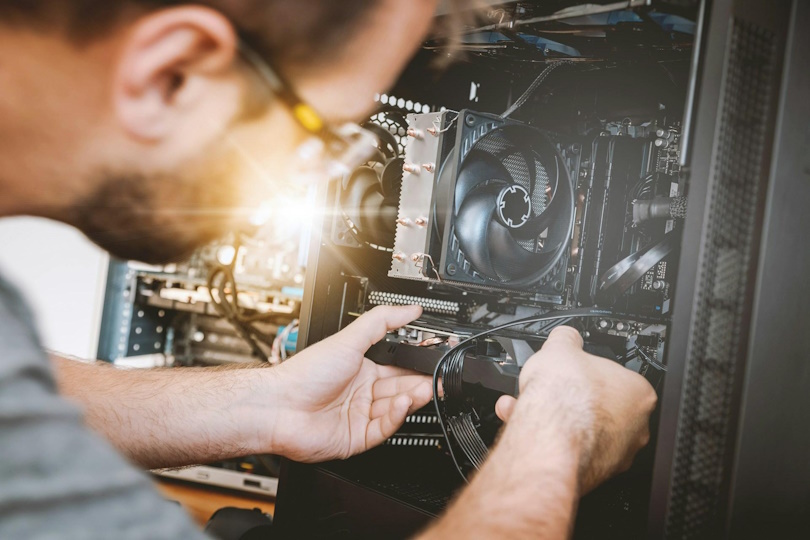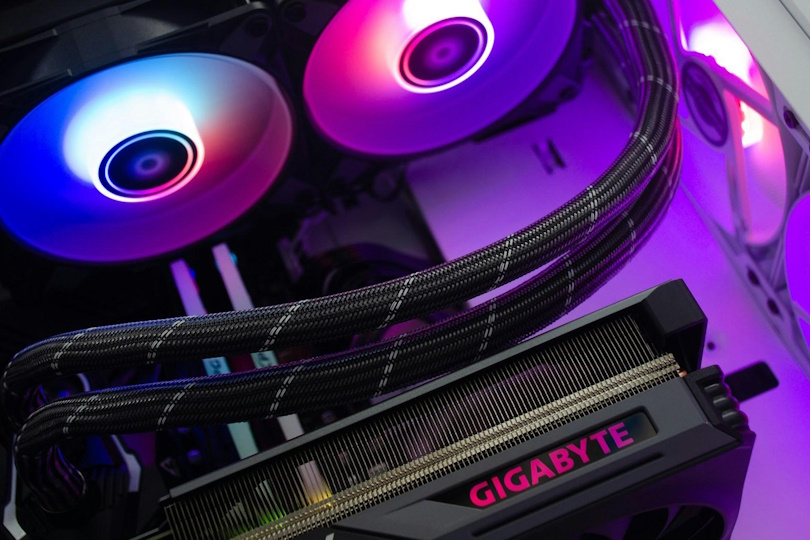Why would you need Light Bench?
Test and compare your GPU on real rendering problems. Equip yourself for overclocking

Estimate
rendering performance
Because Light Bench is built on the same unique GPU path tracing engine as Light Tracer Render, you can reliably forecast your graphics card's performance in real-life workflows. You can test and compare graphics cards from different vendors, such as NVIDIA, AMD, and Intel. Utilize our online score database to rank and compare GPUs by performance and price.

Compare scores online
See how your Light Bench score compares to results from other systems using the same GPU. All published scores represent the median of all results submitted by users with identical hardware. This enables you to easily assess how well your system is performing and identify any potential limiting factors.

Overclock to the max!
Light Bench is an extreme GPU stability test that is very sensitive to any calculation and video memory errors resulting from overclocking or other factors like insufficient or excessive voltages, power supply instability, overheating issues, etc. By quickly identifying problems, the amount of time needed for tinkering and testing can be reduced dramatically!
If you run the Web version on a dual-GPU laptop, ensure your browser uses a dedicated GPU
We recommend to use at least GeForce GTX 670 / GeForce GTX 1050 / AMD Radeon RX 560 / Apple M1
Get Light Bench
Download Light Bench for your platform
GPU released after 2013 with updated driver required
Light Bench is built on Light Tracer Render engine. See what's new in the most recent version
Top Rendering Scores
Top-10 GPUs ranked by rendering performance in the Light Tracer engine
Higher scores are better, doubling the score indicates halving rendering time
| Average score | Graphics card | Runs |
|---|---|---|
| 604410
|
NVIDIA GeForce RTX 5090 | 1 |
| 426236
|
NVIDIA GeForce RTX 4090 | 1 |
| 400764
|
NVIDIA GeForce RTX 5080 | 1 |
| 266065
|
NVIDIA GeForce RTX 4080 | 1 |
| 261010
|
NVIDIA GeForce RTX 5070 | 2 |
| 220377
|
NVIDIA GeForce RTX 4070 Ti SUPER | 3 |
| 161831
|
NVIDIA GeForce RTX 5060 Ti | 1 |
| 160616
|
NVIDIA GeForce RTX 4080 (laptop) | 1 |
| 145041
|
AMD Radeon RX 7900 XT | 1 |
| 102964
|
NVIDIA GeForce RTX 4070 (laptop) | 1 |
Frequently Asked Questions
Frequently asked questions regarding Light Bench
-
What engine is Light Bench based on?
Light Bench is based on the Light Tracer Render engine and harnesses its power in a portable, free tool that renders several test scenes in about 3 minutes to assess the performance of your graphics card.
Since the Light Tracer Render engine is cross-platform and vendor-agnostic, our benchmark serves as an excellent stress test for almost any GPU. It accurately predicts performance in real-life rendering scenarios by involving most heavy-duty features supported by Light Tracer Render, such as full-GI path tracing, bidirectional path tracing, physically based material evaluation, physical lens simulation with depth-of-field effects, bloom, glare, and filmic tone mapping.
-
How is the score calculated?
The benchmark sequentially renders several scenes, each at a fixed quality with a specified number of samples per pixel (SPP). The rendering speed is estimated based on the time spent on each scene, measured in millions of samples per second (MSamples/sec). The scores obtained from all test scenes are then summed to derive the final result. This method allows for a more robust estimation of the rendering performance across different scenarios.
-
How to configure a web browser for optimal rendering performance?
The experience is much better with a discrete (dedicated) graphics card. If you have a dual-GPU laptop, take advantage of running the browser on a dedicated GPU, not the integrated one. We recommend at least GeForce GTX 670 / GeForce GTX 1050 / AMD Radeon RX 560 / Apple M1 to work with Light Tracer Render comfortably.
The web version of Light Tracer Render runs on Google Chrome, Mozilla Firefox, Microsoft Edge, Opera, and the latest Safari. Note that Safari has only recently got all the necessary features to run Light Tracer, so its support is still experimental. Other platforms are not officially supported, however, Chromium-based browsers should work fine.
Check the status of WebGL 2
The ray-tracing core requires WebGL 2, so please ensure that it is available. You can visit webgl-report for details (check Unmasked Renderer to find out which graphics card is used for rendering).
Use discrete GPU on a dual-GPU laptop
If your laptop has several GPUs (e.g. integrated GPU from Intel/AMD for output and dedicated from NVIDIA/AMD for games), please ensure that the web browser uses a more powerful one (it should be in the Unmasked Renderer). Automatic selection of a dedicated GPU cannot be performed at the application level, so you have to do it yourself:
- macOS: Check the Apple support page Set graphics performance on MacBook Pro.
- Windows (NVIDIA/AMD): set a dedicated graphics card for chrome.exe in the NVIDIA/AMD control panel.
Download/install latest graphics drivers
It is important to keep your graphics drivers up-to-date, because web browsers may not enable WebGL 2 for old GPU driver versions.
Use native OpenGL as graphics backend
Also, since Light Tracer Render is implemented with WebGL 2, it may be reasonable to switch the underlying 3D API to OpenGL. That may improve the performance and makes the shader compiling much faster (as well as renderer initialization time).
In the case of Google Chrome, you can find Chrome flags by just typing "chrome://flags" or "about://flags" in the Omnibox (address/search bar). Once "Chrome flags" is opened, you will see a list of features that you can enable or disable. You need "Choose ANGLE graphics backend" setting that should be set to OpenGL. After changing it, click on “Relaunch” button that will save your changes and restart Chrome.
For using OpenGL in Firefox you need to change the runtime option. Type "about:config" into the address bar. In recent versions of Firefox, find "webgl.disable-angle" variable. By default, it is set to "false": native OpenGL is not used. Set it to "true" to start using OpenGL (browser restart is not needed).
